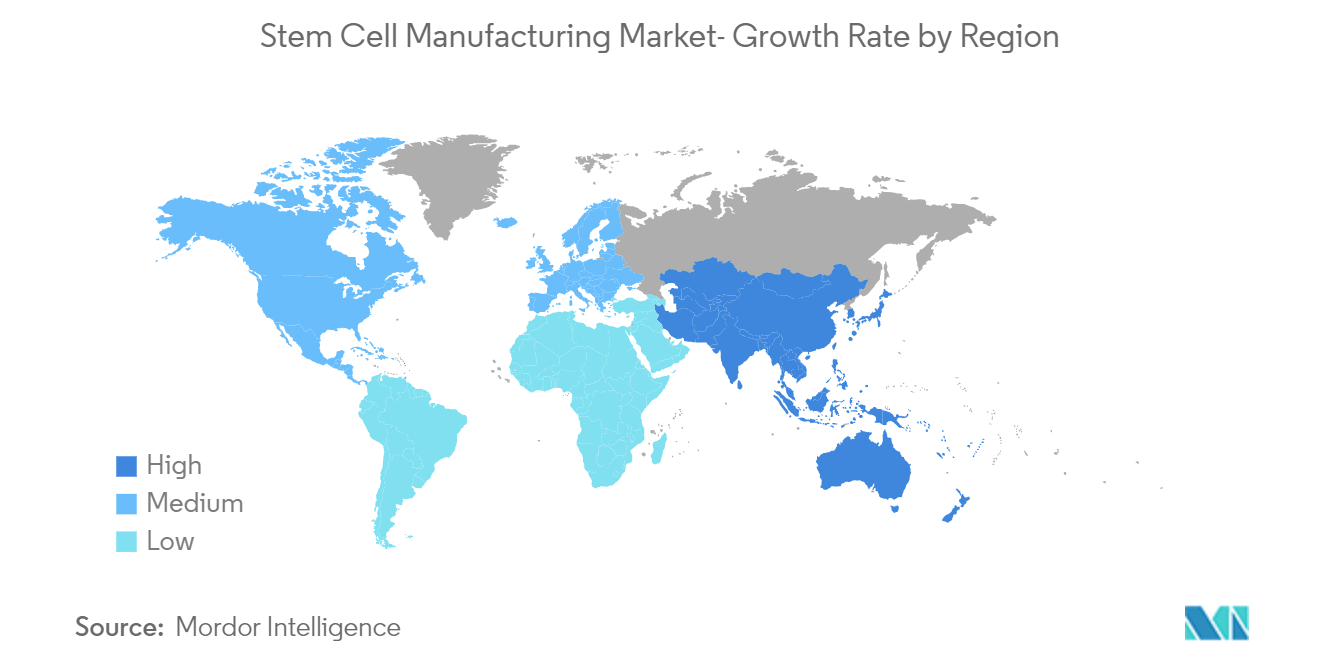Market Trends of Stem Cell Manufacturing Industry
Stem Cell Banking Segment is Likely to Witness a Significant Growth in the Stem Cell Manufacturing Market Over the Forecast Period
A stem cell bank is a provision that stores stem cells developed from amniotic fluid for future use. Stem cell samples in private banks are stored specifically for use by the individual from whom such cells have been collected, and the banking costs are paid by the person. The sample can later be recovered or used only by that individual or, in many cases, by their first-degree blood relatives. The studied segment is anticipated to witness growth owing to the factors such as a rise in launches of stem cell banks globally, an increase in awareness regarding the importance of preserving stem cells.
In addition, the establishment of stem cell banks across the world will contribute significantly to the market's growth. For instance, in September 2021, LifeCell International Pvt. Ltd received an investment of INR 225 crore (USD 27.2 million) from OrbiMed Asia Partners IV in return for a minority stake, which was likely to enable the company to make a foray into adjacent new categories, such as fertility health and cell-based therapeutics.
The major factor driving the segment's growth is the increasing public demand for cord blood stem cell banking and rising awareness regarding the prospective advantages of stem cell preservation. Moreover, several government and private agencies are collaborating to address the common issues associated with stem cell ma manufacturing and processing, improving the working on stem cell banks, thereby driving the segment growth. For instance, in September 2021, STEMCELL Technologies launched human pluripotent stem cell (hPSC) characterization and banking services in partnership with WiCell. These services, offered through STEMCELL's Contract Assay Services division, provide researchers with comprehensive cell quality assessments and enable them to generate cell banks using standardized practices.
Thus, with the rise in research studies of stem cell therapy, and the increase in initiatives and funding for establishing stem cell banks, the studied segment is anticipated to witness significant growth over the forecast period.

North America is Anticipated to Hold a Significant Share in the Market Over the Forecast Period
North America is expected to hold a significant share of the overall market throughout the forecast period. The market growth is due to the presence of key players, high concentration of stem cell research in the region, mounting public-private funding and grants to support the clinical evaluation of stem cells for various applications, robust research infrastructure, and growing public awareness of the therapeutic potency of stem cells. For instance, in April 2022, Canada's Stem Cell Network (SCN) launched IGNITE 2022-2025, its three-year strategic plan funded by the Government of Canada through a USD 45 million Budget 2021 commitment. This strategic plan, IGNITE 2022-2025, is built on three core pillars: research, training, and knowledge mobilization. Each is vital to SCN as they work to position Canadian-based scientists and expertise at the forefront of regenerative medicine (RM) globally.
Furthermore, a rise in the number of approvals partnerships relating to stem cell therapy is expected to drive the market's growth. For instance, in March 2021, Vertex Pharmaceuticals received the FDA grant as a fast-track designation to VX-880, a human stem cell-derived therapy for patients with Type 1 diabetes. VX-880 is a first-in-class, allogeneic, fully differentiated islet cell therapy designed to regulate glucose levels by restoring a patient's pancreatic islet cell function, including insulin production.
Moreover, in November 2022, ExCellThera Inc. completed the patient enrollment in its initial Phase 2 studies for high-risk leukemias and myelodysplastic syndromes (MDS). ECT-001 Cell Therapy, ExCellThera's most advanced investigational drug, combines the proprietary molecule UM171 and an optimized culture system to produce unique UM171-expanded stem cell transplants, and it also enables the use of small cord blood units without compromising engraftment. The trials across the different phases show positive outcomes.
Thus, with the rise in research studies of stem cell therapy, and the increase in initiatives and funding by key players and the government, North America is anticipated to hold a significant share of the market over the forecast period.


